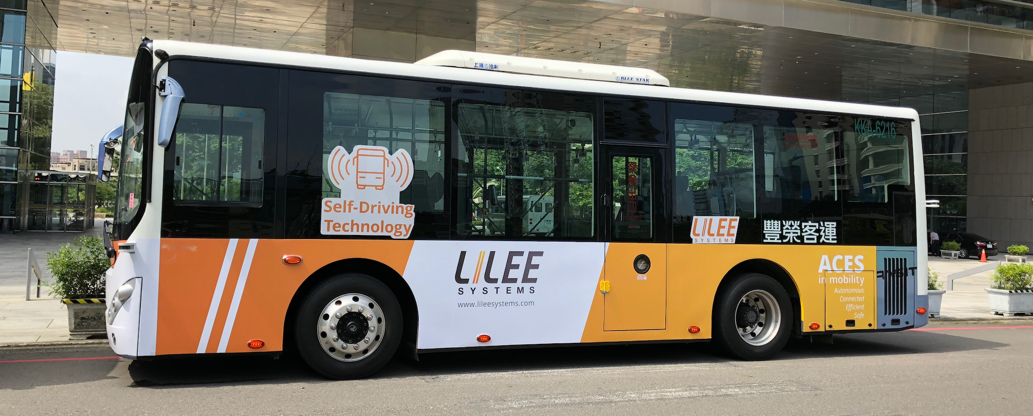In 2018, the Taiwanese government initiated proof-of-service trials for Autonomous Rapid Transit (ART). Thousands of people experienced a 9-meter autonomous bus on a fixed route in Taichung, Taiwan’s second-largest city, traveling at speeds of up to 30 km/h. This trial marked the beginning of a new era in autonomous transit, proving ART as a viable solution for real-world autonomous transportation.
Autonomous Vehicles Today
Early enthusiasm for self-driving cars promised to increase convenience and reduce accidents by eliminating human errors. However, real-world complexities have slowed progress in fully autonomous personal cars. While technology giants and automotive companies continue to announce new solutions, the timeline for achieving true autonomy on open streets keeps being pushed back. Current systems still struggle to navigate unpredictable urban environments, which means that unleashing fully autonomous cars today could exacerbate traffic issues instead of resolving them.
Moreover, the cost of autonomous vehicle technology remains a significant barrier. A car that costs $30,000 could see its price skyrocket to over $130,000 when outfitted with the necessary sensors and autonomous driving systems. For both the businesses and consumers, building, selling or purchasing a fully autonomous car can be out of reach, and the benefits to cities and the public are still unclear, delaying widespread adoption.
Why ART is the Real-World Solution?
Safety
The ART system borrows safety protocols from the rail industry, a sector known for its strict adherence to safety standards. ART is designed to operate on a virtual track and is monitored by a centralized operational control center (OCC). The integration adds a crucial layer of oversight. Every action the self-driving vehicle takes is verified both locally and remotely through a fail-safe system. This practice, perfected by railroads over decades, ensures that ART meets the highest safety standards for autonomous driving—making it far safer than any individual autonomous car.
Reliability
Unlike private autonomous vehicles, which must navigate unpredictable traffic, ART’s virtual track is a pre-defined, fixed or semi-fixed route , much like the physical track for metro or light rail systems. This setup allows ART to provide scheduled, predictable service, unaffected by traffic conditions. With the integration of vehicle-to-infrastructure (V2I) communications and smart roadside detection and signaling systems, ART further ensures reliable and efficient operations.
Faster Deployment and Higher ROI
ART’s real-world trials in Taiwan have demonstrated the feasibility of retrofitting existing diesel city buses for autonomous operation, reducing the financial burden on cities and operators. This lowers the entry barrier for autonomous transit projects, allowing municipalities to invest in ART systems without the need for expensive new vehicles. For example, a $100,000 investment in autonomous technology for a $300,000 bus that can transport 30+ passengers is far more cost-efficient than making the same investment in a $30,000 compact car.
Furthermore, ART can be deployed using existing infrastructure like dedicated bus lanes, eliminating the need for pricy physical tracks. This reduces both capital costs, total cost of ownership, and deployment timelines, making ART a more practical solution compared to traditional rail-based transit systems.
Adoption and Consumer Confidence
As public transportation, ART is less intimidating than private autonomous cars, which still feel like science fiction to many. The regulated ART system on a virtual track provides a safer environment for the technology to flourish. Additionally, the combination of AI and sensor fusion, low-latency wireless communications, and real-time remote monitoring increases public trust in the safety of ART, closing the trust gap that autonomous personal cars struggle to bridge.
How Can Autonomous Public Transportation Succeed?
Close collaboration between governments and industry is critical for the success of ART. Clear regulations and continuous testing are vital for validating the technology and ensuring public confidence. Globally, cities are beginning to take note. In the U.S., cities like Jacksonville, Florida, and Austin, Texas, are planning ART lines to address challenges such as population growth and driver shortages. Meanwhile, cities like Tainan in Taiwan have already moved forward with plans for new bus routes dedicated for ART.
As autonomous driving technology continues to evolve, ART stands out as the most practical solution for real-world adoption. With lower total cost of ownership, faster implementation, and proven safety, it’s time for cities to embrace ART and provide their citizens with safe, efficient, and reliable autonomous transportation.
